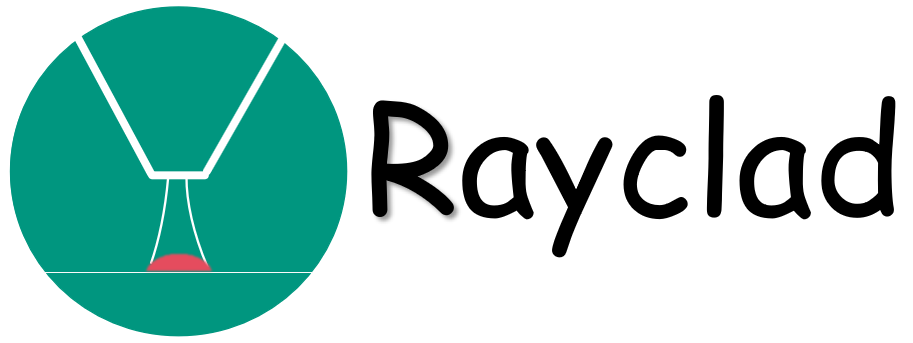Can aluminum alloy powder be used for laser cladding?
Yes, aluminum alloy powder can be used in laser cladding, an advanced metal processing technology. Laser cladding uses high-energy laser beams to instantly heat metal powder and then quickly solidify to form a metal coating to enhance the performance of metal parts on the surface. As a lightweight material, aluminum alloy can be used to improve the wear resistance, corrosion resistance and heat resistance of parts after laser cladding. It is commonly used in aerospace, automobile manufacturing, machinery manufacturing and other fields.
What should we pay attention to when laser cladding aluminum alloy powder?
When laser cladding aluminum alloy powder, there are several key considerations to keep in mind:
1. Powder Quality:
Ensure that the aluminum alloy powder used is of high quality, with consistent particle size and minimal impurities.
2. Laser Parameters:
Optimize the laser power, scanning speed, and spot size to match the specific characteristics of the aluminum alloy powder and achieve the desired metallurgical properties without causing excessive overheating or spatter.
3. Substrate Pre-treatment:
Properly clean and prepare the substrate material to ensure good adhesion and bonding with the aluminum alloy clad layer.
4. Atmosphere Control:
Manage the atmosphere in the cladding chamber to prevent oxidation of the aluminum alloy powder during the laser process.
5. Thermal Stress Minimization:
Control the cooling rate during and after the laser cladding process to minimize thermal stress and potential cracking in the clad layer.
6. Quality Control:
Implement methods for in-process monitoring and post-cladding inspection to ensure the integrity and quality of the clad layer, including measures such as non-destructive testing and metallographic analysis.
By paying close attention to these factors, you can ensure the successful laser cladding of aluminum alloy powder with desired mechanical and metallurgical properties.
What are the commonly used powders for aluminum alloy cladding?
Some commonly used powders for aluminum alloy cladding include:
Aluminium
Zinc
Copper
Nickel
Silicon
These powders are often used in processes such as thermal spraying or laser cladding to protect and enhance the surface properties of aluminum alloy components. Each powder has specific properties that can improve the performance and longevity of the cladding materials.
there are specific material grades for aluminum alloy cladding powders. These grades are typically designated based on the composition of the powder and its intended application. For example, aluminum alloy cladding powders may be designated with specific alloy compositions, such as AA4047 or AA7072, AL6061-T6511,7075-T651, which indicate the specific alloying elements present in the powder.
How is aluminum alloy powder transported?
Aluminum alloy powder is typically transported in sealed containers or packaging that is designed to prevent moisture ingress and minimize the risk of ignition or combustion. The transportation of aluminum alloy powder is subject to various regulations and safety guidelines to ensure safe handling and mitigate the risks associated with the material’s combustible nature.
Common methods of transporting aluminum alloy powder include:
1. Sealed drums or containers:
Powdered aluminum alloy is often packaged in sealed metal drums or containers to prevent exposure to moisture and to contain the material in the event of accidental ignition.
2. Bulk bags:
For larger quantities, aluminum alloy powder may be transported in flexible intermediate bulk containers (FIBCs), commonly known as bulk bags, which provide a convenient and efficient means of transporting and handling the powder.
3. Specialized transport vehicles:
When transporting aluminum alloy powder in bulk, specialized transport vehicles equipped with appropriate safety features may be used to ensure compliance with regulations and to minimize the risk of hazards during transit.
It’s important to adhere to safety regulations and guidelines provided by relevant authorities when transporting aluminum alloy powder to ensure the safety of personnel, the public, and the environment. Additionally, shippers and carriers should be aware of any specific requirements or restrictions related to the transportation of aluminum alloy powder, including labeling, packaging, and handling procedures.
What kind of laser light source is used for laser cladding of aluminum alloy powder with a high absorption rate?
For laser cladding of aluminum alloy powder with a high absorption rate, it’s important to select a laser light source that is well-suited for efficient energy absorption by the aluminum alloy material. In this case, a diode laser may be particularly suitable.
Additionally, laser wavelength plays a crucial role in the absorption characteristics of the material. For aluminum alloys, which typically have high reflectivity at certain wavelengths, selecting a laser light source with a wavelength that matches the absorption peak of the material can enhance the overall energy absorption and process efficiency.
What are the applications of aluminum alloy laser cladding?
Aluminum alloy laser cladding finds a variety of applications across different industries due to the unique properties and advantages it offers. Some common applications of aluminum alloy laser cladding include:
1. Surface protection and enhancement:
Laser cladding is used to deposit a layer of aluminum alloy onto the surface of components to improve their wear resistance, corrosion resistance, and overall durability. This is particularly valuable in industries such as automotive, aerospace, and manufacturing where components are exposed to harsh operating environments.
2. Repair and refurbishment:
By using laser cladding, worn or damaged aluminum components can be effectively repaired and refurbished by adding a layer of aluminum alloy material to restore their original dimensions and properties. This extends the service life of critical components and reduces the need for complete replacement, leading to cost savings.
3. Additive manufacturing:
Laser cladding can be utilized in additive manufacturing processes to build complex aluminum alloy parts layer by layer. This approach enables the creation of customized components with tailored material properties, making it valuable in industries like aerospace, medical, and automotive where lightweight and high-strength aluminum parts are in demand.
4. Thermal management solutions:
Aluminum alloy laser cladding is used to create heat-dissipating structures and coatings, making it valuable in thermal management applications for electronic devices, power generation systems, and other heat-sensitive equipment.
5. Functional surface modification:
Laser cladding enables the addition of functional coatings to aluminum components, such as anti-corrosion coatings, thermal barrier coatings, or high-temperature resistant layers, expanding the range of applications for aluminum alloys in various industries.
These applications demonstrate the versatility and effectiveness of aluminum alloy laser cladding in enhancing the performance, longevity, and functionality of components across diverse industrial sectors.


